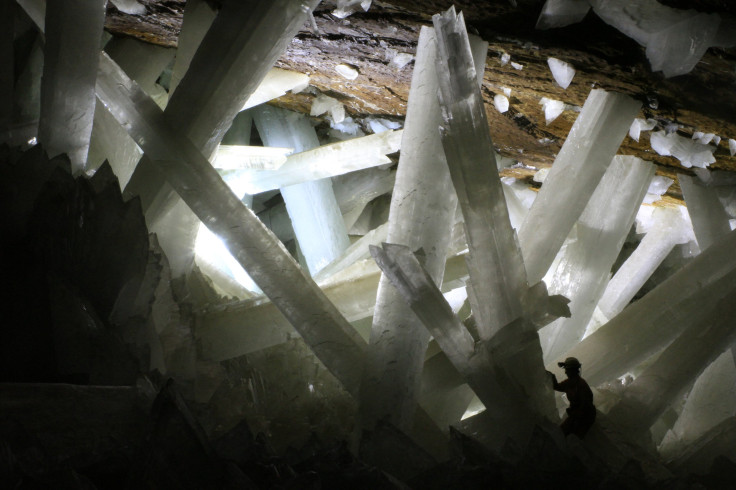Cave Of The Crystals In Naica, Mexico, Home To Long-Dormant Life-Form Not Known To Science

Microbes that are over tens of thousands of years old, but still previously unknown to science, have been found in the unique environment of the Naica crystal caves in Mexico. These microorganisms were lying dormant for all that time, and yet, scientists were able to revive them, it was revealed Friday at the ongoing annual meeting of the American Association for the Advancement of Science (AAAS).
During an afternoon session called “Risks and Benefits in the Astrobiological Exploration of Other Worlds,” Penelope Boston, director of NASA Astrobiology Institute, said she had collected samples of fluid trapped inside the gigantic gypsum crystals in the Cave of the Crystals in Chihuahua, Mexico, in 2008 and 2009. The samples contained the microbes which her team analyzed, based on the age of the crystals and their growth, to be between 10,000 and 50,000 years old.
“These organisms have been dormant but viable for geologically significant periods of time, and they can be released due to other geological processes. This has profound effects on how we try to understand the evolutionary history of microbial life on this planet,” Boston reportedly said.
According to her team’s analysis, the microbes are genetically distinct from any other known life-form on Earth, and are most similar to other microbes found in caves in volcanic terrains — places where the environment is as hot (between 100 and 140 degrees Fahrenheit), humid and acidic as it is in the Cave of the Crystals.
“Other people have made longer-term claims for the antiquity of organisms that were still alive, but in this case these organisms are all very extraordinary — they are not very closely related to anything in the known genetic databases,” Boston said at the conference.
Previously, scientists have been able to revive microbes far older than 50,000 years. Ancient microbial life — as much millions of years old — has been found trapped in ice or salt crystals, and revived successfully, according to its claimants. And even Boston’s claims have been met with a lot of skepticism, despite her insistence her team had been really careful.
“Contamination during drilling with microorganisms attached to the surface of these crystals or living in tiny fractures constitutes a very serious risk. I am very skeptical about the veracity of this finding until I see the evidence,” microbiologist Purificación López-García of the French National Center for Scientific Research told National Geographic.
And the same contamination concerns were expressed by Boston when it comes to the question of humans looking for traces of life in places other than on Earth.
“How do we ensure that life-detection missions are going to detect true Mars life or life from icy worlds rather than our life? Aspects of my work illustrate the extreme toughness of life on Earth and the restrictions that places on us,” she said.
The 2017 AAAS annual meeting is being held at Hynes Convention Center, Boston, from Feb. 16-20.
© Copyright IBTimes 2025. All rights reserved.





















